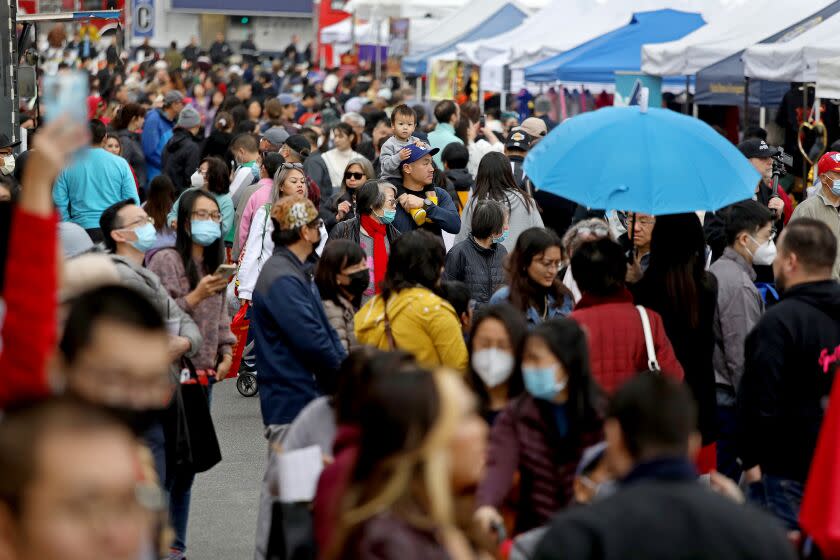Opinion: Culver City caved to car culture. These cities are resisting it

Culver City broke a lot of hearts last month when its leaders voted to eliminate a protected bike lane from its downtown corridor. Between that and the spiraling pedestrian deaths in the city of Los Angeles, there’s a feeling we’re moving in the wrong direction when the need for urban transformation is greater than ever.
But Culver City and Los Angeles are just two of L.A. County's 88 cities, and plenty of them have chosen a different, less car-centric path. Some of the cities making progress are trying to break a much stronger motorist stranglehold on their communities than Culver City ever had.
I know because I live in Alhambra, a community on the western edge of the San Gabriel Valley shaped in many ways by freeway traffic. Right now, the city is at the start of a years-long planning effort to improve safety for cyclists and pedestrians.
This doesn’t sound like much, but consider: Until recently, Alhambra politics were laser-focused on building an interstate highway extension — at first through part of the city, then underneath it when the prospect of bulldozing neighborhoods for another freeway became unpopular.
When I moved to Alhambra in 2011, a “Finish the 710” banner hung over our busiest north-south arterial. Now, I’m being asked to join other residents in identifying problem intersections and ideal streets for protected bike lanes. City leaders are reimagining the so-called 710 stub — which currently dumps rush-hour freeway traffic into Alhambra and El Sereno — as a road with protected areas for cyclists and pedestrians.
Whiplash has never felt so refreshing.
Though Alhambra’s transportation goals might have changed, the desire for improved safety motivating them haven’t, says Sasha Renée Pérez, a City Councilwoman and Alhambra native. She told me that the decades-long support for building the 710 extension was “based on false premise that it would immediately reduce the amount of traffic in Alhambra and it would make our city safer.”
But with Caltrans having effectively killed off the project in 2018, she said, “residents still want to see a reduction in traffic; residents still want to see a reduction in speed.”
And some of the community members clamoring the most for change aren’t biking or transit activists, but elderly residents. Both Perez and Wesley Reutimann — co-founder of ActiveSGV, an advocacy group in the San Gabriel Valley working with Alhambra on its mobility plan — mentioned the city’s dismal record on pedestrian deaths among people older than 65.
Alhambra is far behind Culver City’s efforts two years ago to prioritize biking and transit in its downtown with separate lanes for each. But the grassroots outreach taking place here — and in multiple languages, something that Perez says is crucial in a city as diverse as Alhambra — holds the promise of making our changes more durable.
Perez said her concern for traffic safety stems from childhood memories of walking underneath the 10 Freeway on narrow sidewalks to visit friends in other parts of the city. Today, my three children are growing up in the same city, but with ever-larger SUVs and rising pedestrians deaths.
The need to respond to this threat has moved other San Gabriel Valley communities to act. Reutimann says El Monte and South El Monte — both working-class, heavily Latino cities — are local leaders in building “complete streets” that allow safer use by cyclists and pedestrians. Pasadena, despite the failure of a plan to slow traffic and improve safety on Orange Grove Boulevard, is building more protected bike lanes. Even Glendora, with a more conservative city council and where nearly all housing is single-family, opted to keep its pandemic-era street parklets.
In deciding whether to alter the cityscape, Reutimann says cities need to ask themselves, “Do they want safer streets 24/7, or faster traffic during the few hours of rush hour?”
For now, Culver City opted for the latter, but other communities in this region are going in a different direction. Some changes will take years to make, so let’s hope they keep at it.
This story originally appeared in Los Angeles Times.

